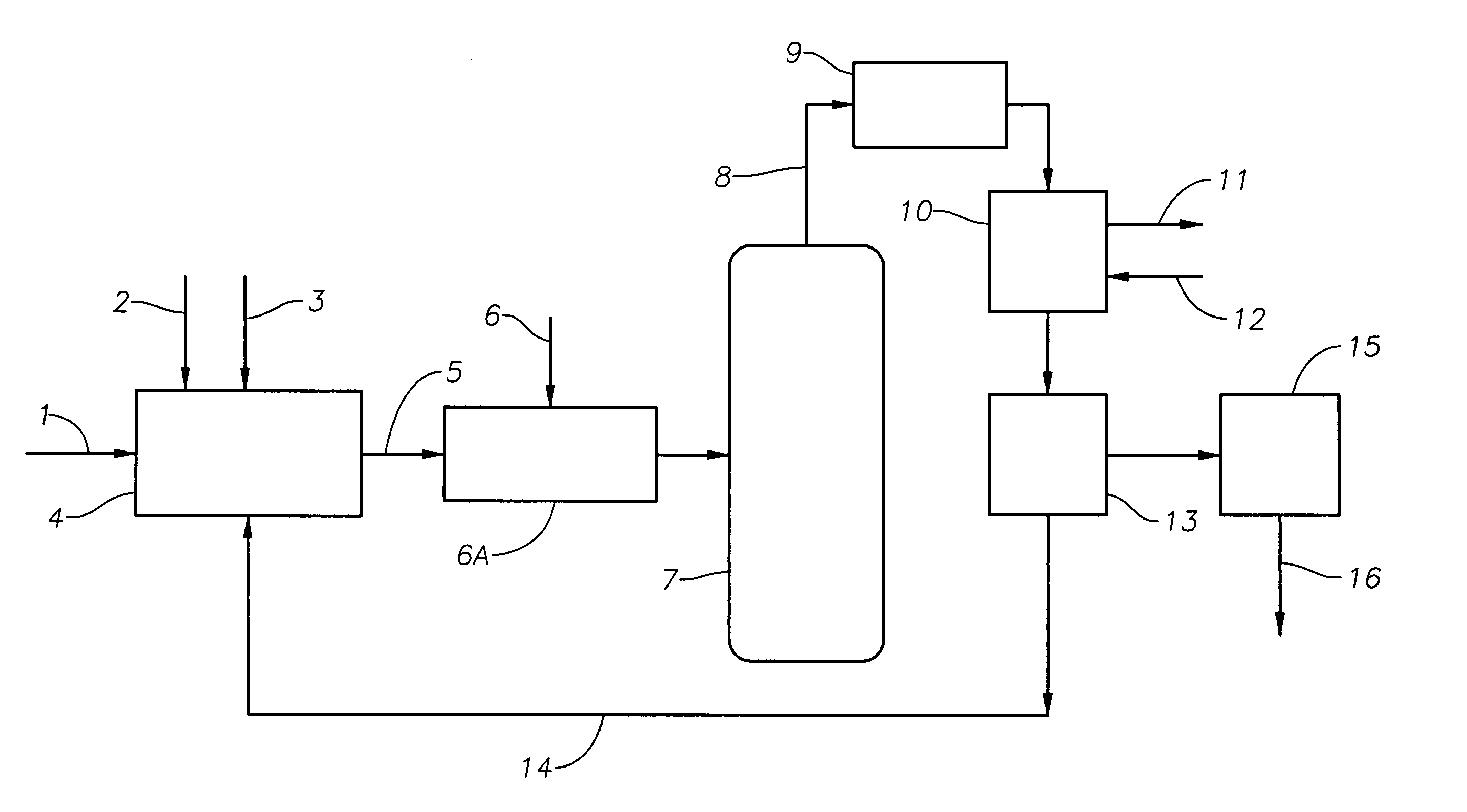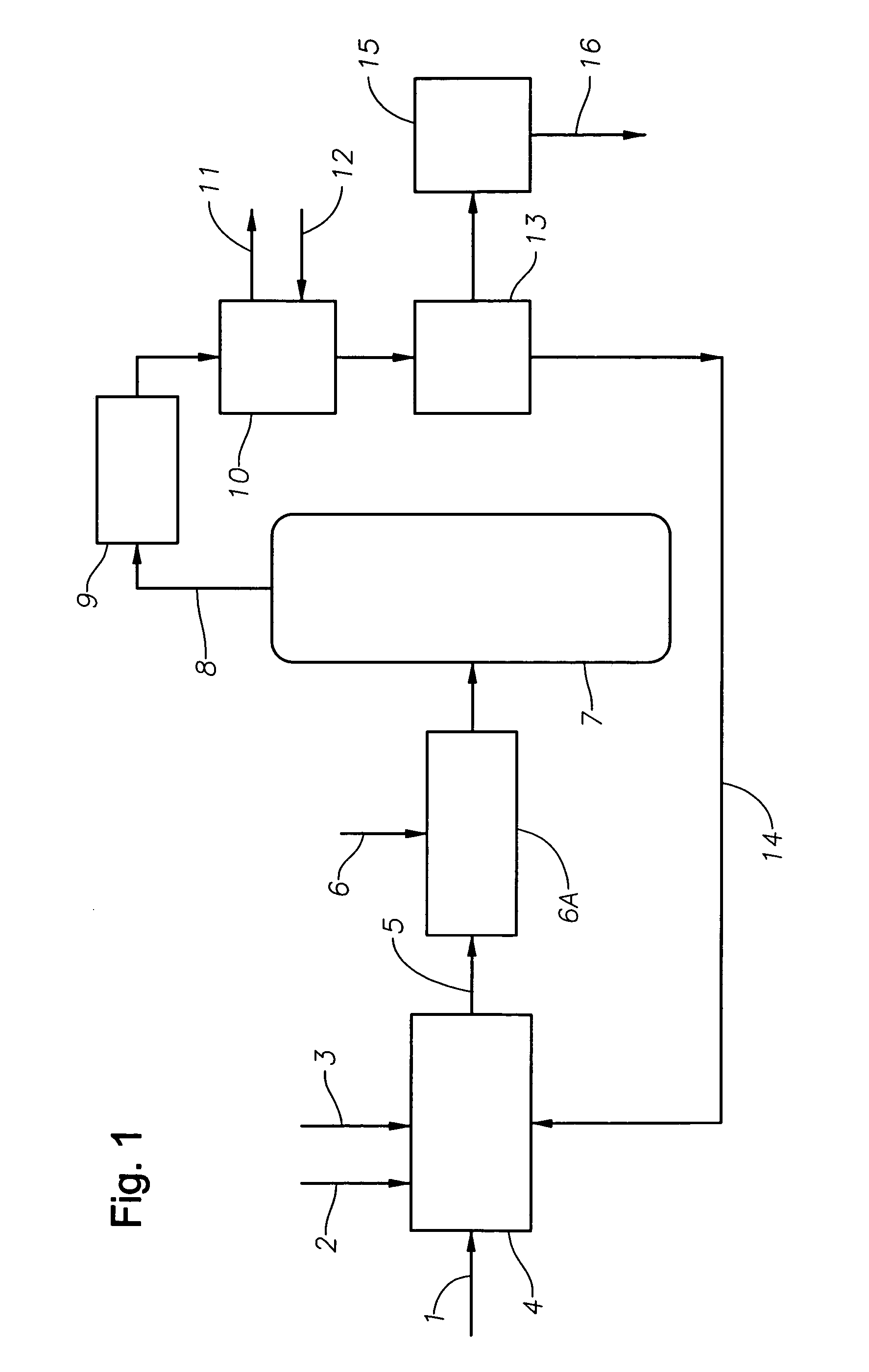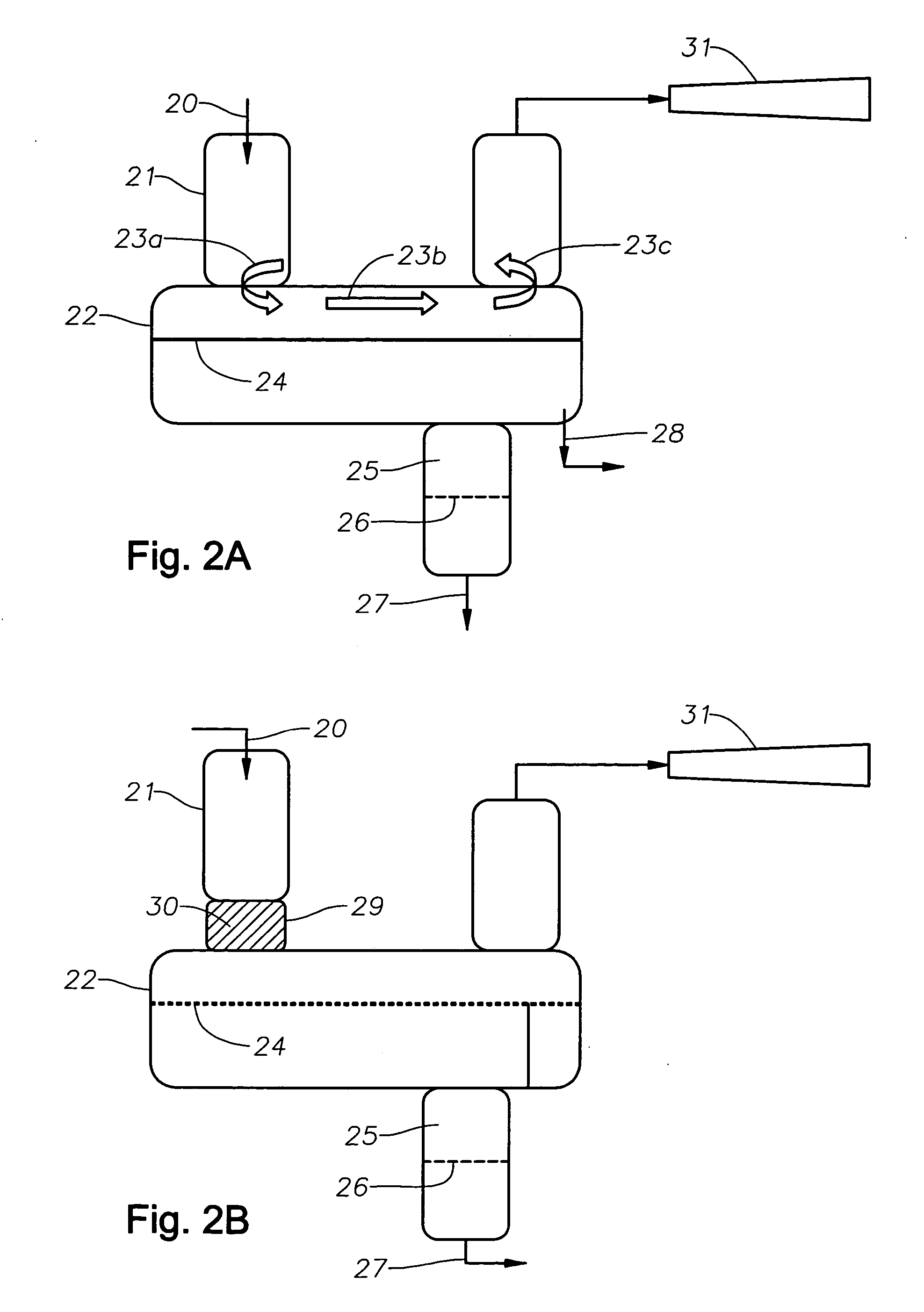Catalyst recovery process
- Summary
- Abstract
- Description
- Claims
- Application Information
AI Technical Summary
Benefits of technology
Problems solved by technology
Method used
Image
Examples
example 1
[0042] A reaction mixture comprising about 10 weight % methyl alcohol, about 23 weight % boron trifluoride and about 67 weight % decene was distilled in a laboratory vacuum distillation column at a pot bottoms pressure of 10 mm Hg and temperature of 220° C. The overheads from this distillation column were condensed in a condenser with cooling water temperature of about 30° C. The recovered boron trifluoride-organic catalyst condensed from the distillation column overheads was about 88 mole % saturated. About 9% of the boron trifluoride dissociated during the distillation was not recovered as evidenced by loss of boron trifluoride through the vacuum system.
example 2
[0043] A reaction mixture comprising about 4.7 weight % butyl alcohol, about 2.5 weight % butyl acetate, about 5.8 weight % boron trifluoride and about 87 weight % decene was distilled in a laboratory vacuum distillation column, as described in Example 1, at a pot bottoms pressure of 10 mm Hg and temperature of 220° C. The overheads from this distillation column were condensed in a condenser with cooling water temperature of about 20° C. The boron trifluoride-organic catalyst condensed from the distillation column overheads was about 78 mole % saturated. About 12 mole % of the boron trifluoride dissociated during the distillation was not recovered as evidenced by loss of boron trifluoride through the vacuum system.
example 3
[0044] A reaction mixture comprising about 7 weight % butyl alcohol, about 5 weight % butyl acetate, about 9 weight % boron trifluoride and about 79 weight % decene was combined in a laboratory reactor at a system pressure of 2 mm Hg and temperature of about 220° C. The gas vapors from this reactor were condensed in a condenser, as described in Example 1, with the cooling water temperature of about 20° C. Without subjecting the vapors to efficient mixing, i.e, conventional condenser without a structured packing material, the condensed boron trifluoride-butyl alcohol / butyl acetate catalyst was about 65 mole % saturated. About 29 mole % of the boron trifluoride initially present in the reactor dissociates and was not recovered as evidenced by the boron trifluoride lost through the vacuum system.
[0045] The same gas vapors when allowed to come into contact via packed elements and baffles resulted in condensed boron trifluoride-butyl alcoholibutyl acetate catalyst that was about 85 mole...
PUM
| Property | Measurement | Unit |
|---|---|---|
| Fraction | aaaaa | aaaaa |
| Fraction | aaaaa | aaaaa |
| Fraction | aaaaa | aaaaa |
Abstract
Description
Claims
Application Information
 Login to View More
Login to View More - R&D
- Intellectual Property
- Life Sciences
- Materials
- Tech Scout
- Unparalleled Data Quality
- Higher Quality Content
- 60% Fewer Hallucinations
Browse by: Latest US Patents, China's latest patents, Technical Efficacy Thesaurus, Application Domain, Technology Topic, Popular Technical Reports.
© 2025 PatSnap. All rights reserved.Legal|Privacy policy|Modern Slavery Act Transparency Statement|Sitemap|About US| Contact US: help@patsnap.com



